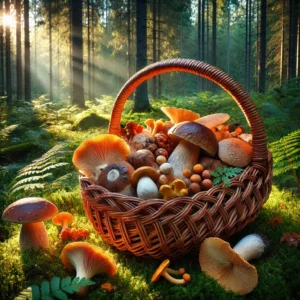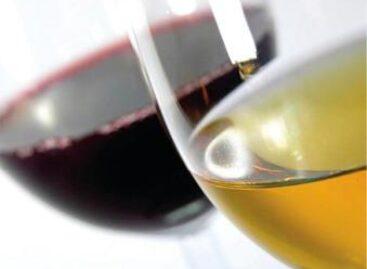There has been a drastic increase in mushroom poisoning incidents across the country!
With the start of the mushroom season, illnesses after consuming mushrooms also increased, currently the number of mushroom poisoning incidents has increased tenfold compared to the average number of incidents. During the mushroom season, not only poisonous species cause problems, but also improperly prepared and stored mushroom dishes. The National Food Chain Safety Office (Nébih) hereby draws the attention of mushroom collectors to always present the mushrooms they collect to a mushroom expert.

(Photo: AI)
The long-lasting summer heat wave ended with a national rain. 100-150 mm of precipitation fell both in the Great Plains and in the mountains. With the good autumn weather, cap mushrooms appeared in large numbers: both the edible species and the non-edible and poisonous species representing 90% of the total mushroom harvest. The first mushroom to appear in large numbers on the meadows and pastures is the carbolic-scented mushroom, which is a poisonous mushroom species and has caused many poisonings this season as well. As the weather cools down, the field carnation, which is sought after and collected by almost most people in the country, first decreases and then disappears completely. Their place is taken by several small poisonous species of funnel-shaped mushrooms growing in meadows and pastures, which cause more diseases every year. In our planted forests of the Great Plains, you can see the well-loved champignon mushroom, the pine champignon, the edible champignon, the champignon mushroom and the devil’s chariot mushroom, which is also loved by many. However, in disturbed areas, on ditch banks and forest edges, the garden foot fungus, which also causes diseases every year, also appeared.
The killer mushroom is present in large numbers throughout the country, which can be found in significant quantities every year at mushroom inspection sites, in the display baskets of collectors who do not know mushroom species.
At this time, most people look for mushrooms in the mountains, where edible and poisonous mushroom species have appeared in large numbers
As a result of the pleasant weather, the summer species have not yet disappeared either. The species that can be collected in the fall will also appear: the purple porcini mushroom, the gray funnel mushroom, the pine and ring champignons, the edible pigeon mushrooms and milk mushrooms, the popular risk species, and the trumpet mushrooms. However, at the same time, inedible and poisonous mushroom species appear in large numbers. The two species responsible for the most cases of poisoning are currently the large boletus and the luminous funnel. Almost all species of weevils can be found: the killer weevil, the fly-killing weevil, the panther weevil, the lemon weevil, but there are also a large number of species of other poisonous genera in the forests: for example, wood mushrooms. As the weather cools, of course, the autumn mushrooms completely take over the role: among others, the purple porcini mushroom, the gray funnel mushroom and the ringed boletus mushroom.
In the current weather conditions, people can collect a lot of mushrooms in nature
Delicious mushroom dishes can be prepared, but the authority also wants to draw attention to the dangers of mushroom gathering. It is important to know that during the season, in addition to poisonous species, improperly prepared and stored mushroom foods can also cause illnesses. If you do not have sufficient knowledge of the species, have the wild mushrooms you have collected examined by a mushroom inspector. However, according to Nébih, the safest solution is for all mushroom collectors to do this. The fungus inspection can save lives! It is crucial not to consume or give uncontrolled mushrooms as a gift!
Nébih
Related news
Authorities seize expired gyro meat in Budapest: inspections tighten in the street food sector
🎧 Hallgasd a cikket: Lejátszás Szünet Folytatás Leállítás Nyelv: Auto…
Read more >Safe holiday preparations: food safety tips for your Christmas menu
🎧 Hallgasd a cikket: Lejátszás Szünet Folytatás Leállítás Nyelv: Auto…
Read more >Layers of problems
🎧 Hallgasd a cikket: Lejátszás Szünet Folytatás Leállítás Nyelv: Auto…
Read more >Related news
2025 was a black year for the Hungarian food industry: product lines under pressure on multiple fronts
🎧 Hallgasd a cikket: Lejátszás Szünet Folytatás Leállítás Nyelv: Auto…
Read more >The GVH imposed fines of more than 3.7 billion forints on 29 companies in 2025
🎧 Hallgasd a cikket: Lejátszás Szünet Folytatás Leállítás Nyelv: Auto…
Read more >Hungary’s economy in 2025: recovery from slowdown, weaker forint and the increasing importance of corporate strategic decisions 2026 will be a test of resilience
🎧 Hallgasd a cikket: Lejátszás Szünet Folytatás Leállítás Nyelv: Auto…
Read more >






